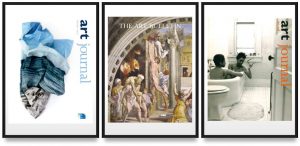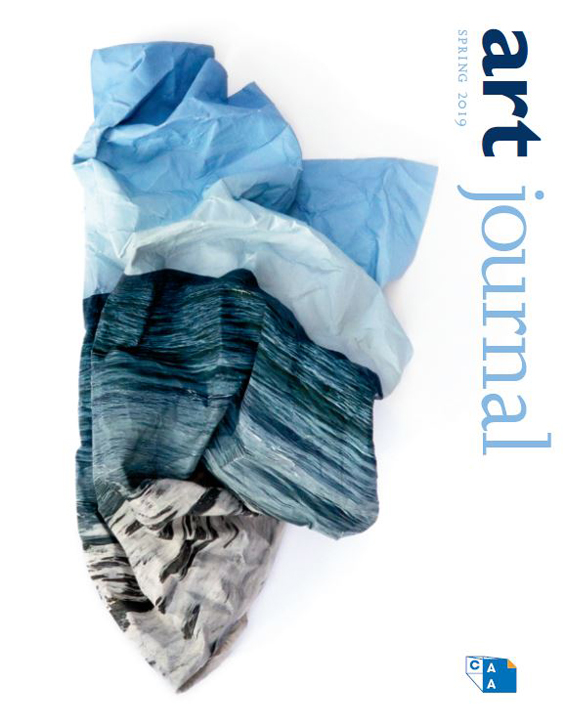CAA News Today
Deadlines extended! Serve on a CAA Committee or Editorial Board
posted by CAA — January 27, 2020
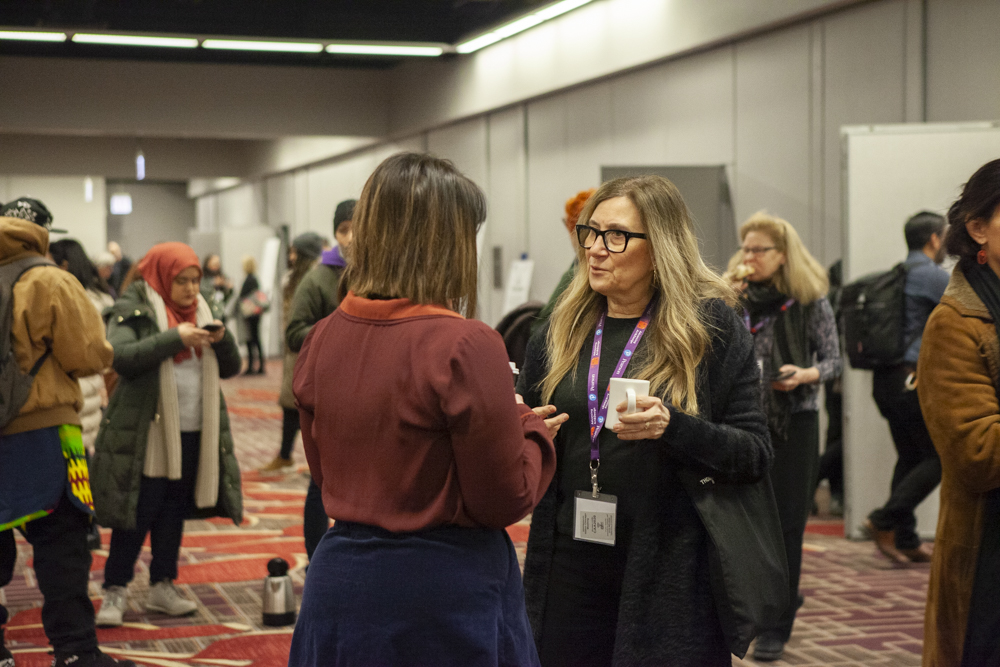
Attendees at the 2020 Annual Conference in Chicago. Photo: Stacey Rupolo
Each spring, members have the opportunity to provide crucial service to the field and gain an inside view by volunteering to work on a CAA committee or editorial board.
Any member may self-nominate for the following positions or (after ascertaining interest) nominate another member. For more information, please click on the links below.
CURRENT OPPORTUNITIES
Art Journal—Editor-In-Chief
Deadline (extended): June 1, 2020
caa.reviews—Field Editor for East Asian Art
Deadline (extended): June 1, 2020
Publications Committee—Two Members
Deadline (extended): June 1, 2020
PAST OPPORTUNITIES
Art Journal / Art Journal Open (AJO) Editorial Board—Three Members
Deadline: April 15, 2020
The Art Bulletin Editorial Board—One Member
Deadline: April 15, 2020
The Art Bulletin—One Reviews Editor or Coeditor Team
Deadline: April 15, 2020
caa.reviews Editorial Board—Three Members (One an Emerging Professional)
Deadline: April 15, 2020
caa.reviews—Eight Field Editors
African Art, African Diaspora/African American Art, Architecture and Urban Planning, Asian Art, Contemporary Art, Exhibitions: East Coast, Exhibitions: Midwest, Exhibitions: West Coast
Deadline: April 15, 2020
Art Journal / Art Journal Open (AJO) Editorial Board Seeks New Members
posted by CAA — November 11, 2019
CAA invites nominations and self-nominations for two individuals to serve on the Art Journal / AJO Editorial Board for a three-and-one-half-year term: January 1, 2020–June 30, 2023 Candidates may be artists, art historians, art critics, art educators, curators, or other art professionals; institutional affiliation is not required. Art Journal, published quarterly by CAA, is devoted to twentieth- and twenty-first-century art and visual culture. AJO is an online forum for the visual arts that presents artists’ projects, conversations and interviews, scholarly essays, and other forms of original content. Committed to fostering new intellectual exchanges in the fields of modern and contemporary art, AJO prioritizes material that makes meaningful use of the web and publishes on a rolling basis.
The editorial board advises the Art Journal and AJO editors-in-chief and assists them in seeking authors, articles, artists’ projects, and other content for the journal; performs peer review and recommends peer reviewers; guides the journals’ editorial programs and may propose new initiatives for them; promotes and advocates for both journals; and may support fundraising efforts on their behalf. Members also assist the editors-in-chief to keep abreast of trends and issues in the field by attending and reporting on sessions at the CAA Annual Conference and other academic conferences, symposia, exhibitions, and events.
The Art Journal / AJO Editorial Board meets three times a year, with meetings in the spring and fall plus one at the CAA Annual Conference in February. The fall and spring meetings are currently held by teleconference. Members are expected to pay travel and lodging expenses to attend the conference in February. Members of all editorial boards volunteer their services to CAA without compensation.
Candidates must be current CAA members in good standing and should not be serving on the editorial board of a competitive journal or on another CAA editorial board or committee. Members may not publish their own work in the journals during the term of service. CAA encourages applications from colleagues who will contribute to the diversity of perspectives on the Art Journal / AJO Editorial Board and who will engage actively with conversations about the discipline’s engagements with differences of culture, religion, nationality, race, gender, sexuality, and access. Nominators should ascertain their nominee’s willingness to serve before submitting a name; self-nominations are also welcome. Please send a letter describing your or your nominee’s interest in and qualifications for appointment, a CV, and your contact information to Joan Strasbaugh, Managing Editor, at JStrasbaugh@collegeart.org or c/o CAA, 50 Broadway, 21st floor, New York, NY 10004.
Deadline: Sunday, December 8, 2019
Marking Indigenous Peoples’ Day with Art Journal
posted by CAA — October 14, 2019
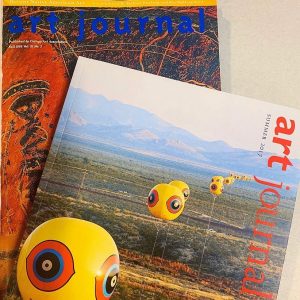
In celebration of Indigenous Peoples’ Day we have brought out from behind the paywall two issues of Art Journal in their entirety: our Summer 2017 issue on Indigenous Futures, (featuring Postcommodity’s Repellent Fence on the cover) and our Fall 1992 issue on Recent Native American Art. Articles from each will be open access until the end of October.
Announcing the Recipients of the 2019 Spring Millard Meiss Publication Fund Awards
posted by CAA — June 13, 2019
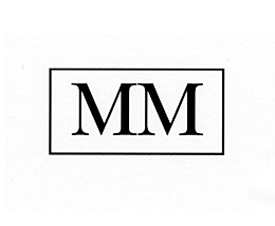
The Millard Meiss Publication Fund is made possible by a generous bequest of the late Prof. Millard Meiss. Two times each year, CAA awards grants to publishers in art history and visual culture to support presses in the publication of projects of the highest scholarly and intellectual merit that may not generate adequate financial return.
The Meiss grantees for spring 2019 are:
Bajorek, Jennifer, Unfixed: Photography and Decolonial Imagination in West Africa, Duke University Press, 2019.
Busbea, Larry, The Responsive Environment: Design, Aesthetics, and the Human in the 1970s, University of Minnesota Press, 2019.
Fozi, Shirin, Romanesque Tomb Effigies: Death and Redemption in Medieval Europe, 1000-1200, Penn State University Press, 2020.
Guinness, Katherine, Schizogenesis: The Art of Rosemarie Trockel, University of Minnesota Press, 2019.
Naoi, Nozomi, Beyond the Modern Beauty: Takehisa Yumeji and the New Mediascape of Early Twentieth-Century Japan, University of Washington Press, 2019.
Newbury, Susanna, Speculations: Art, Real Estate, and the Making of Global Los Angeles, University of Minnesota Press, 2020.
Overton, Keelan, Iran and the Deccan: Persianate Art, Culture, and Talent in Circulation, 1400-1700, Indiana University Press, 2020.
Schwartz, Vanessa R., Jet Age Aesthetic: The Glamour of Media in Motion, Yale University Press, 2020.
Sichel, Kim, Making Strange: The Modernist Photobook in France, Yale University Press, 2020.
Silberstein, Rachel, Embroidered Figures: Fashion and Commerce in Nineteenth-Century China, University of Washington Press, 2020.
VanDiver, Rebecca, Negotiating Traditions: Loïs Mailou Jones and the Composite Aesthetics of Blackness, Penn State University Press, 2020.
Zinman, Gregory Austen, Making Images Move: Handmade Cinema and the Other Arts, University of California Press, 2020.
Celebrate Pride with CAA’s LGBTQ+ Article Collection
posted by CAA — June 13, 2019
Learn more about Art Journal and The Art Bulletin.
An Interview with Jordana Moore Saggese, Editor-in-Chief of Art Journal
posted by CAA — May 21, 2019

Photo by Sarah Deragon, Portraits to the People
Jordana Moore Saggese is an Associate Professor of American Art at the University of Maryland, College Park and the current Editor-in-Chief of Art Journal, CAA’s publication focused on twentieth- and twenty-first-century art history. Trained as an art historian, Saggese’s work focuses on modern and contemporary art with an emphasis on the expressions and theorizations of blackness. She was previously Associate Professor of Contemporary Art & Theory at California College of the Arts.
Joelle Te Paske, CAA Media and Content Manager, corresponded with her this month to learn about how she came to do the work she does, and her aspirations for the journal and the field beyond.
Joelle Te Paske: Thanks for taking the time for our interview, Jordana. So to begin, where are you from originally? What pathways led you to the work you’re doing now?
Jordana Moore Saggese: I am originally from Nashville, Tennessee. I attended Vanderbilt University, as a first-generation college student, for my undergraduate degree, and fell into an art history major at the very last moment. In fact, the summer before my senior year I suddenly realized that every opportunity I had to take an elective unit during my time at Vanderbilt I had chosen an art history class. The art history classes I took with my mentor Leonard Folgarait were truly inspiring. He encouraged his students (even those like me, who had very little knowledge of art history) to consider the work of artists as a response to the values and ideas of society, which in turn are determined by historical conditions. I can still remember his lecture on Dada, which was really the turning point for me. It was at that moment that I realized art was not something meant only for the elite; art could also be a form of rebellion. Although I had never been inside an art museum before my time as an undergraduate, Dr. Folgarait, and other faculty there, encouraged me and asked me to think deeply about the stakes of representation and introduced me to a range of objects across multiple continents and chronologies. With their encouragement, I decided to declare a major in art history and apply for graduate school my senior year.
This meant that I had to take the two-semester survey course as a senior, which fundamentally shifted the way I think about teaching those courses.
I can still remember my shock, sitting in a huge lecture hall, listening to someone drone on about a mostly white, male, heterosexist art history. I was wholly unprepared to memorize a seemingly endless stream of images. I finished the courses but this was not the art history that I was used to. That experience, of coming in almost backwards to the discipline, highlighted two main issues that still impact my teaching and research today.
First, how can we give students the very best introduction to the discipline—one that reflects the deep inquiry and the collaboration that was so intrinsic to my experience in the upper-division courses?
And second, whose art history are we teaching? That is, to what extent has a colonialist logic pervaded much of modern art history and what can I do—in my teaching and research—to undo that logic? I have been acutely aware of the ways in which art history has tended to exclude diverse perspectives and histories and much of my own work involves complicating those dominant narratives.
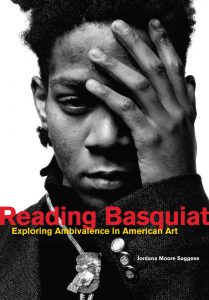
Saggese’s first book, Reading Basquiat: Exploring Ambivalence in American Art, was published by UC Press in 2014.
JTP: I love these questions as a fundamental starting point—not supplement—to the question of teaching art history. You were previously on the faculty at the California College of the Arts, and are now at University of Maryland, College Park. How has the transition been?
JMS: Teaching at an art school for the first ten years of my career was a wonderful experience in that it gave me direct and constant access to working artists. Thanks to my colleagues I was able to stay current in the field—a challenge for any historian of contemporary art—and my students constantly challenged me to make the history of art come into real time and space. CCA was also a site of experimentation, where students and faculty were willing to challenge one another, to wrestle openly with difficulty, and to fail. I have tried to bring those values to my teaching at Maryland as well. I have found the students and faculty at College Park to be deeply invested in their individual fields of interest but also in the discipline as a whole. There has also been tremendous support for my research practice, which has been a great benefit to making this transition.
JTP: As a Basquiat scholar, what is something you wish more people know about the artist?
JMS: I wish that more people considered the extent to which Basquiat’s celebrity status has threatened to eclipse his critical significance. My main project has been, and continues to be, writing this artist into the history of American art. I would also add that working on Basquiat presents extreme challenges for a researcher. There is no public archive of his work and approximately 85-90% of the paintings and drawings are in private collections (and I might mention, constantly being sold). This means that in order to see the works, one must shake a lot of hands, charm a lot of people, and knock on lots of doors. Working on Basquiat requires a thick skin, as I am often embroiled in territorial battles or even ignored. I also spend a lot of money traveling to see exhibitions so that I might glimpse the works in person. So, it’s not your typical research project!
JTP: I can only imagine the challenges that presents in pushing research forward—it’s far from a straightforward dive into the archives. What are you working on currently?
JMS: My second book, The Basquiat Reader: A Critical Anthology will be published by the University of California Press in 2020. The Basquiat Reader is a comprehensive sourcebook on Basquiat for both general audiences and advanced readers. Through a combination of interviews with the artist, criticism from the artist’s lifetime and immediately after, previously unpublished research by me, and a selection of the most important critical essays on the artist’s work, The Basquiat Reader provides a full picture of the artist’s views on art and culture, his working process, as well as the critical significance of his work both then and now. It is my hope that by giving more people access to the primary sources, we will see more scholarship on this artist.
My new book project considers representations of black male athletes as a point of entry to thinking about how black men have historically been presented to (and positioned by) the white mainstream public as a fear/fantasy. More specifically, I examine the ways in which black masculinity is constructed in the visual realm, and how the black athletic body can shape the moral, physical, and social position of African American men more broadly. Over five chapters I analyze key moments in the history of the sport, prominent black athletes and their representation in the American popular press and visual art.
JTP: That is such important work, especially as those constructions persist and accelerate in contemporary visual culture. What are your hopes for Art Journal during your tenure?
JMS: During my tenure I would like to continue to build on the global reach of the publication—in terms of both content and readership. I mean global here as something more than a keyword to signal “diversity.” I use global to signal an interconnected conversation between Europe, Asia, Africa, Latin America, South America, the Pacific—rather than a series of isolated references to an “other.” I want to think of how the perspective of modern and contemporary art from Mumbai or even Beijing connects to as well as lives separate from the touch-points of America and Europe. This is something that I began to explore in my edited forum, “Diversity and Difference,” published in Art Journal in 2016—that is, how can we think beyond the paradigm of margins and center?
I am also hoping to increase a direct engagement of artist members via the introduction of new features, such as “Object Lessons,” which will first appear in Fall 2019. This is an opportunity for artists to consider a specific object of visual culture that has directly impacted or influenced their own practice. I am also increasing the diversity of artists that we publish in Art Journal. For example, every artist project for issues published in 2019 was developed by a woman of color.
Finally, I want to highlight the role of the journal as a forum for professional conversations. Readers can expect to see short essays on fair use, censorship, and the white supremacist logic of art history—topics that typically are buried in whispers. I see Art Journal as a place where these difficult conversations and issues come to light. Many readers of Art Journal are also teachers, and I hope to bring more focus to issues of pedagogy over the coming years of my tenure as Editor-in-Chief.
JTP: It’s exciting to see the direction you are bringing to it. What are some of your other arts-related recommendations at the moment?
JMS: I have really enjoyed seeing the conversation around #POCarthistory (started by Ananda Cohen-Aponte [who recently took over CAA’s Instagram]) develop on Twitter over the last months. As someone interested in our current moment I am constantly reading Hyperallergic and I have found the resources on the website of the Association for Critical Race Art History very important to my own pedagogical development. I am currently reading The Painter’s Touch by Ewa Lajer-Burcharth.
JTP: Do you have a favorite exhibition you’ve seen recently?
JMS: This year I really enjoyed the shows by Jack Whitten (Met Breuer) and Nari Ward (New Museum), but I am still reeling from the show of new paintings by Lynette Yiadom-Boakye (Under-Song for a Cipher), which I saw at the New Museum two years ago. That show left me speechless.
The Spring 2019 issue of Art Journal is now online.
Not a CAA member? Join today and begin exploring immediately.
Serve on the Millard Meiss Publication Fund Jury
posted by CAA — April 19, 2019
CAA invites nominations and self-nominations for individuals to serve on our Millard Meiss Publication Fund jury for four years (2019–23). Terms begin July 2019.
JURY VACANCIES FOR SPRING 2019
- Millard Meiss Publication Fund: two members
Duties and Qualifications
The Millard Meiss Publication Fund jury awards subsidies to support the publication of book-length scholarly manuscripts in the history of art and related subjects. Members review manuscripts and grant applications twice a year and meet in New York in the spring and fall to select the awardees. CAA reimburses jury members for travel and lodging expenses in accordance with its travel policy. Members volunteer their services to CAA without compensation. Candidates must be actively publishing scholars with demonstrated seniority and achievement; institutional affiliation is not required.
Candidates must possess expertise appropriate to the jury’s work and be current CAA members. They should not hold a position on a CAA committee or editorial board beyond May 31, 2019. CAA’s president and vice president for committees appoint jury members for service.
HOW TO APPLY
Nominations and self-nominations should include a brief statement (no more than 150 words) outlining the individual’s qualifications and experience and a CV (an abbreviated CV no more than two pages may be submitted). Please send all materials by email to Cali Buckley, CAA grants and special programs manager; submissions must be sent as Microsoft Word or Adobe PDF attachments. For questions about jury service and responsibilities, contact Tiffany Dugan, CAA director of programs and publications.
Deadline: May 13, 2019
caa.reviews Seeks Editor-in-Chief and Four Field Editors
posted by CAA — January 15, 2019
caa.reviews Seeks Editor-in-Chief
The caa.reviews Editorial Board invites nominations and self-nominations for the position of Editor-in-Chief for a three-year term, July 1, 2020–June 30, 2023. This term is preceded by one year of service on the editorial board as editor designate, July 1, 2019–June 30, 2020, and followed immediately by one year of service as past editor. Candidates should have published substantially in the field and may be academic, museum-based, or independent scholars; institutional affiliation is not required. An online journal, caa.reviews is devoted to the peer review of new books, museum exhibitions, and projects relevant to the fields of art history, visual studies, and the arts.
Working with the editorial board, the editor-in-chief is responsible for the content and character of the journal. The editor-in-chief supervises the caa.reviews Council of Field Editors, assisting them in identifying and soliciting reviewers, articles, and other content for the journal; develops projects; and makes final decisions regarding content.
The editor-in-chief attends the caa.reviews Editorial Board’s three meetings each year—held in New York in May and October and once at the Annual Conference in February—and submits an annual report to CAA’s Board of Directors. CAA reimburses the editor-in-chief for travel and lodging expenses for the two New York meetings in accordance with its travel policy, but the person in this position pays these expenses to attend the conference. The editor-in-chief also works closely with the CAA staff in New York and receives an annual honorarium paid quarterly.
Candidates must be current CAA members and should not be serving on the editorial board of a competitive journal or on another CAA editorial board or committee. Nominators should ascertain their nominee’s willingness to serve before submitting a name; self-nominations are also welcome. Please send a letter describing your interest in and qualifications for appointment, a CV, at least one letter of recommendation, and your contact information to: caa.reviews Editor-in-Chief Search, CAA, 50 Broadway, 21st Floor, New York, NY, 10004; or email the documents to Publications and Programs Editor Joan Strasbaugh, jstrasbaugh@collegeart.org. Deadline: April 1, 2019; finalists will be interviewed in early May.
caa.reviews Seeks Four Field Editors
In addition, CAA invites nominations and self-nominations for FOUR individuals to join the caa.reviews Council of Field Editors for a three-year term July 1, 2019–June 30, 2022. An online journal, caa.reviews is devoted to the peer review of new books, museum exhibitions, and projects relevant to art history, visual studies, and the arts.
The journal seeks four field editors in the following areas:
- Design History
- Eighteenth-Century Art
- Architecture and Urbanism
- Theory and Historiography
Working with the caa.reviews editor-in-chief, the caa.reviews Editorial Board, and CAA’s staff editor, each field editor selects content to be reviewed, commissions reviewers, and considers manuscripts for publication. Field editors for books are expected to keep abreast of newly published and important books and related media in their fields of expertise, and those for exhibitions should be aware of current and upcoming exhibitions (and other related projects) in their geographic regions.
The Council of Field Editors meets yearly at the CAA Annual Conference. Field editors must pay travel and lodging expenses to attend the conference. Members of all CAA committees and editorial boards volunteer their services without compensation.
Candidates must be current CAA members and should not be serving on the editorial board of a competitive journal or on another CAA editorial board or committee. Nominators should ascertain their nominee’s willingness to serve before submitting a name; self-nominations are also welcome. Please send a cover letter describing your interest in and qualifications for appointment, a CV, and your contact information to: caa.reviews Editorial Board, CAA, 50 Broadway, 21st Floor, New York, NY 10004; or email the documents to staff editor Joan Strasbaugh, jstrasbaugh@collegeart.org. Deadline: April 15, 2019.
Announcing Milette Gaifman and Lillian Lan-ying Tseng as Coeditors of The Art Bulletin
posted by CAA — December 06, 2018
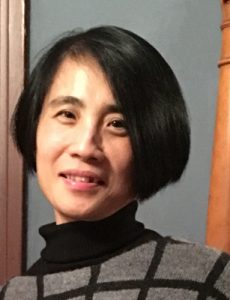
Lillian Lan-ying Tseng
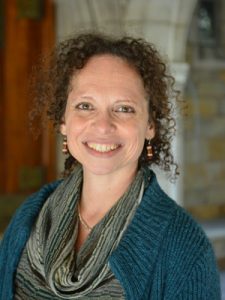
Milette Gaifman
We’re pleased to announce the appointment of Lillian Lan-ying Tseng and Milette Gaifman as the new coeditors of The Art Bulletin. The appointment marks the first joint editorship in the 105-year history of the journal. The Art Bulletin is the flagship journal of art history, covering prehistoric to 21st-century art. Previous editors of The Art Bulletin have included H. W. Janson, George Kubler, Millard Meiss, and John Shapley, among many others. The Art Bulletin editorship rotates every three years.
“CAA believes in interdisciplinary practice and collaboration in all programs and publications. The Art Bulletin’s rich and long history as the journal of record for the art history field will only benefit from this new coeditor approach,” said Hunter O’Hanian, executive director of CAA. “Professors Tseng and Gaifman are highly respected in the field and will bring to the journal diverse experiences and expertise that will be reflected in The Art Bulletin over the years of their editorship.”
Lillian Lan-ying Tseng is associate professor of East Asian art and archaeology at the Institute for the Study of the Ancient World at New York University and specializes in Chinese art and archaeology. The mediums she investigates are diverse, including city planning, architecture, sculpture, painting, calligraphy, textile, and bronze objects. The timeframes of her publications cluster in early imperial China, later imperial China, and the twentieth century. The issues she explores concern not only art objects but also broader contexts in which they are situated, such as how artisans appropriated scientific knowledge for religious purposes, how memory facilitated the creation, circulation, and reception of artifacts, and how political intentions or situations stimulated the development of visual and material cultures. She is the author of Picturing Heaven in Early China (Harvard University Press, 2011). She is currently at work on two book projects: one looks into the reception of antiquity and its impact on visual production in 18th-century China, while the other examines frontiers and visual imaginations in Han China.
“Art and visual culture are central elements in the study of ancient civilizations, as they are of all periods of history,” said Alexander Jones, Leon Levy Director and Professor of the Exact Sciences in Antiquity, Institute for the Study of the Ancient World, NYU. “The Institute for the Study of the Ancient World is proud and delighted on the occasion of Lillian Tseng’s appointment as coeditor of The Art Bulletin.”
Milette Gaifman is associate professor of classics and history of art at Yale University. She is a scholar of ancient art and archaeology, focusing primarily on Greek art of the Archaic and Classical periods. At Yale, she is jointly appointed in the departments of Classics and History of Art. Her research interests include the interaction between visual culture and religion, the variety of forms in the arts of antiquity, the interactive traits of various artistic media, and the reception of Greek art in later periods. In addition, her scholarship explores the historiography of the academic disciplines of art history and archaeology. She is the author of Aniconism in Greek Antiquity (Oxford University Press, 2012), and The Art of Libation in Classical Athens (Yale University Press, 2018); and coeditor of “Exploring Aniconism,” a thematic issue of Religion (2017), and “The Embodied Object in Classical Art,” a special issue of Art History (June 2018).
“It is a significant honor for Yale and for the field of Classical Greek Art that Milette Gaifman has been appointed co-editor of The Art Bulletin. Successor in this role to such hallowed Yale luminaries as Creighton Gilbert and Walter Cahn, Milette will bring the same dynamism and intellectual energy to the position that can be seen in her publications and her hugely successful teaching in our Department,” said Timothy Barringer, Chair and Paul Mellon Professor in the Department of the History of Art at Yale University. “Author of two path-breaking books, Milette is a scholar of wide-ranging tastes and interests, who insists on methodological rigor but also enjoys crossing scholarly borders and dismantling the shibboleths of orthodox thinking. Working with our respected former colleague, Lillian Tseng, she will doubtless bring a new, iconoclastic and perhaps occasionally irreverent spirit to an august journal.”
Wyeth, Terra, and Millard Meiss Publications Grants Open for 2019
posted by CAA — June 21, 2018
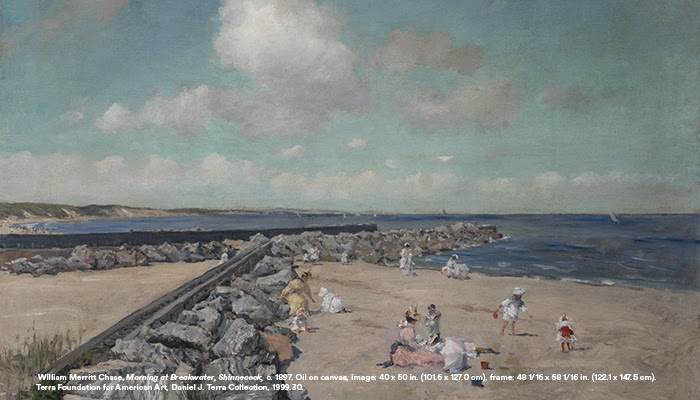
We’re pleased to announce the opening of three publications grants for 2019, the Terra Foundation for American Art International Publication Grant, the Wyeth Foundation for American Art Publication Grant, and the Millard Meiss Publication Fund.
Terra Foundation for American Art International Publication Grant
The 2019 Terra Foundation for American Art International Publication Grant provides financial support for the publication of book-length scholarly manuscripts in the history of American art circa 1500–1980. The grant considers submissions covering what is the current-day geographic United States.
The deadline for letters of intent is September 15, 2018. Awards of up to $15,000 will be made in three distinct categories:
- Grants to US publishers for manuscripts considering American art in an international context
- Grants to non-US publishers for manuscripts on topics in American art
- Grants for the translation of books on topics in American art to or from English.
Learn more about the Terra Foundation for American Art International Publication Grant.
Wyeth Foundation for American Art Publication Grant
Since 2005, the Wyeth Foundation for American Art has supported the publication of books on American art through the Wyeth Foundation for American Art Publication Grant, administered by CAA.
For this grant program, “American art” is defined as art created in the United States, Canada, and Mexico. Eligible for the grant are book-length scholarly manuscripts in the history of American art, visual studies, and related subjects that have been accepted by a publisher on their merits but cannot be published in the most desirable form without a subsidy.
The deadline for the receipt of applications is September 15 of each year. Learn more about the Wyeth Foundation for American Art Publication Grant.
Millard Meiss Publication Fund
Twice a year, CAA awards grants through the Millard Meiss Publication Fund to support book-length scholarly manuscripts in the history of art, visual studies, and related subjects that have been accepted by a publisher on their merits, but cannot be published in the most desirable form without a subsidy. Thanks to the generous bequest of the late Prof. Millard Meiss, CAA began awarding these publishing grants in 1975.
Books eligible for a Meiss grant must currently be under contract with a publisher and be on a subject in the arts or art history.
The deadlines for the receipt of applications are March 15 and September 15 of each year. Learn more about the Millard Meiss Publication Fund.



